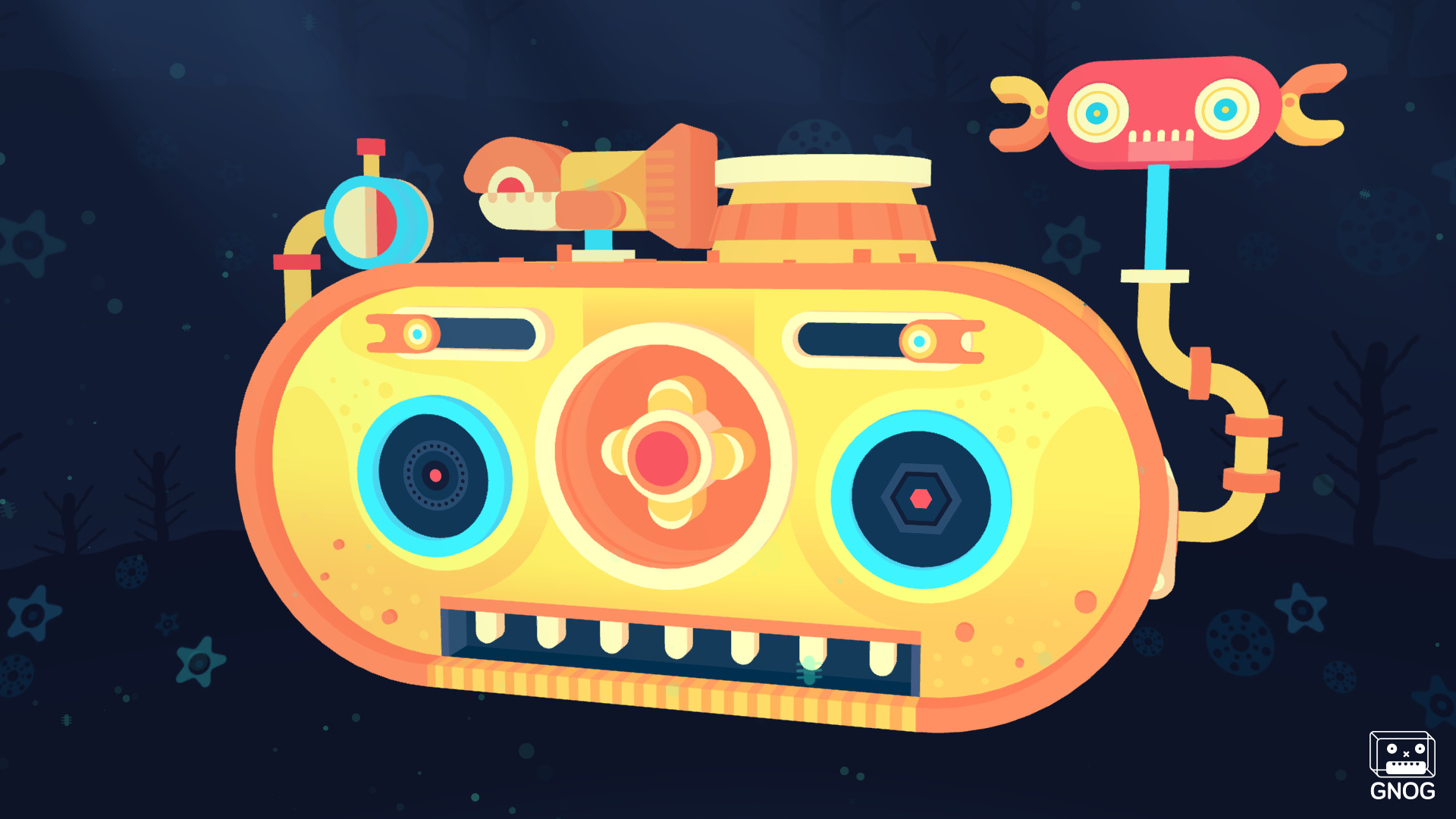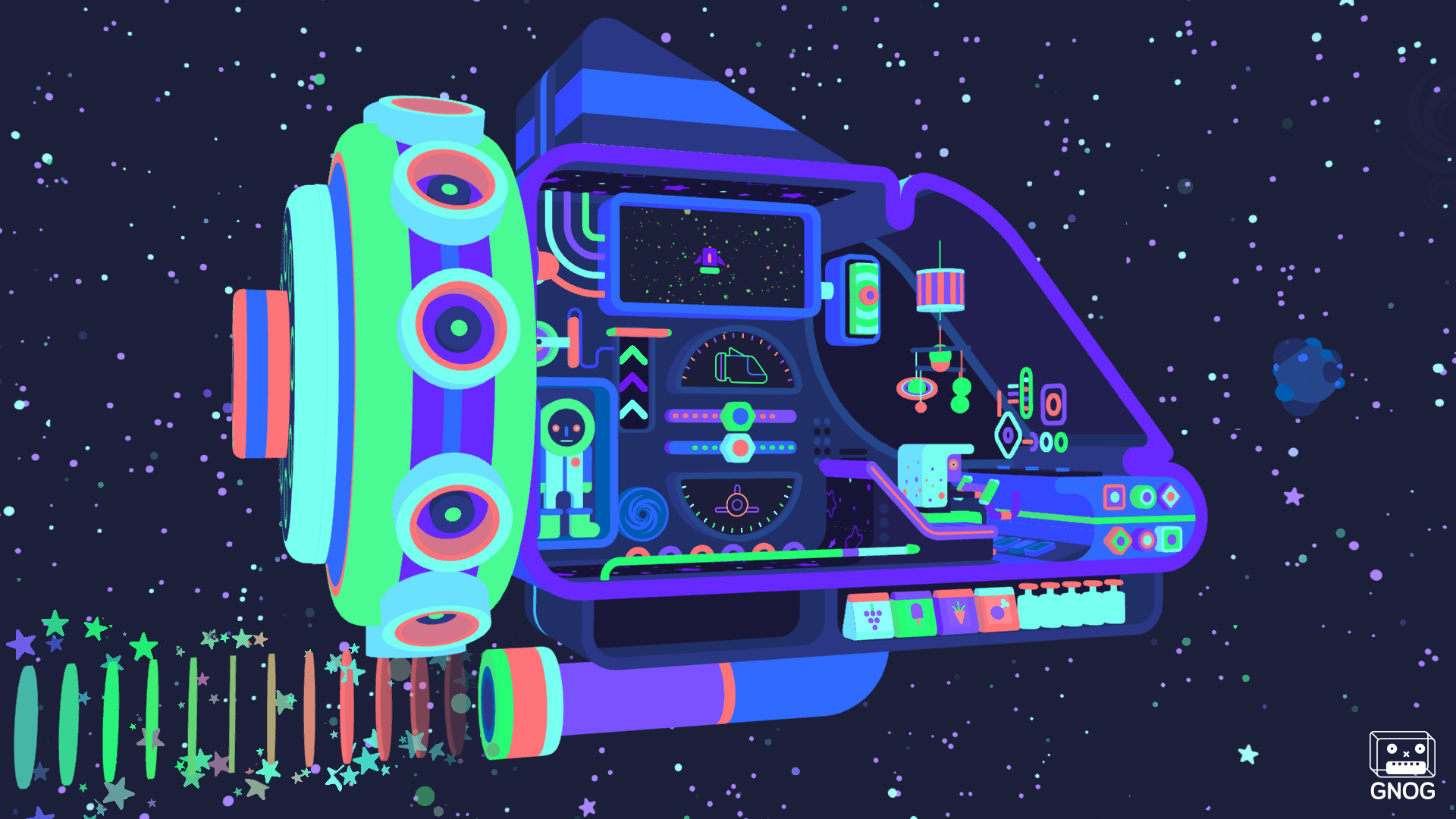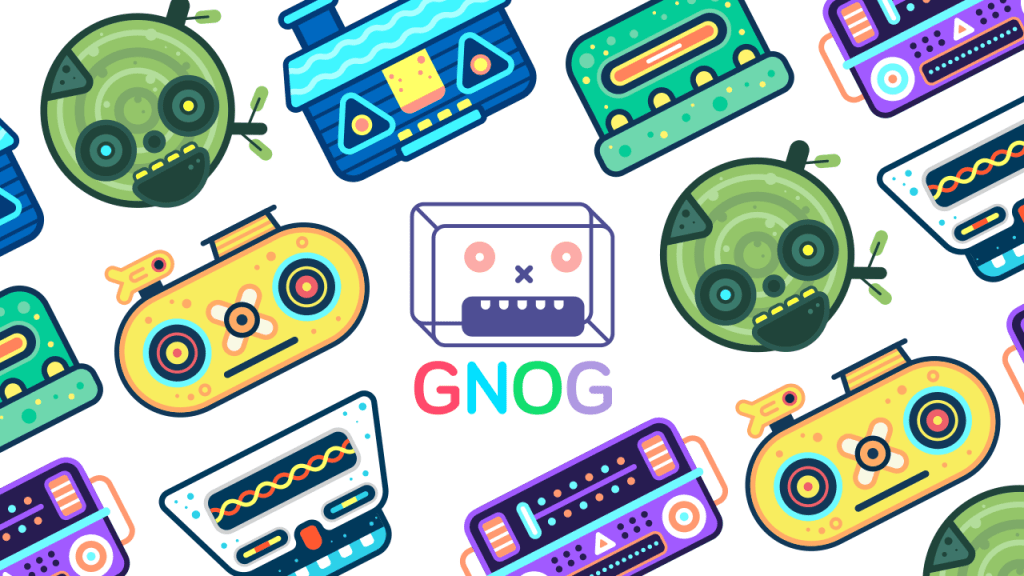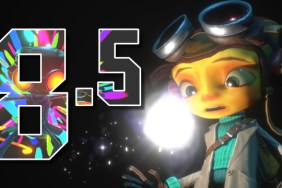It took me a minute when I began playing GNOG to realize what its charming, yelling, singing mechanical heads reminded me of. I soon realized they’re almost like Domo, except far more colorful and varied. GNOG has a toylike quality to it, offering hands-on puzzle gameplay and an impressive, mechanized style across both VR and standard setups. I tested the latter, and found the experience impressive despite the lack of what’s arguable its top feature.
Use your Gnoggin
I’ll get this out of the way now: I’m certain GNOG is more enjoyable to play with VR than without. Truth be told I currently lack a PlayStation VR setup, and as such my time with the game was spent the old fashioned way, punching archaic buttons and twirling passe analog sticks. I can’t be certain, but if you’re a VR junkie it’s probably safe to go ahead and add a half-point or so to my final score.
Viewing method aside, what did strike me immediately about GNOG is that motion controls would suit it wonderfully, but sadly as far as I could determine, the game utilizes the DualShock 4 even with a VR headset attached. It’s no deal-breaker that motion controls were skipped, but I don’t recall a game in recent memory that would theoretically lend itself better – GNOG’s poking, prodding, twisting, and general “hands-on” approach to gameplay feels tailormade for the technology. There’s little use musing on what could have been, but it is worth mentioning.

Thankfully the included controls work just fine, and amount to a point-and-click cursor that can be dragged around levels and used to explore every last corner or bizarre object contained within a stage. Gameplay is varied; sometimes puzzle solutions involve pattern recognition, other times clever manipulation of items and their associated physics, while sometimes the answer simply won’t reveal itself until you fiddle and “mess around” aimlessly for a while.
There’s risk with such a design that the game will feel imprecise or poorly thought-out, but GNOG dodges this issue skillfully. The engaging nature of each level put such thoughts entirely out of my mind, as I was left to gleefully fiddle with endless onscreen distractions instead. The balance between work and play here is a good one, and I rarely felt like I was purely wasting time or purely wracking my brain. It’s a dynamic that, combined with snazzy visual and aural stimuli, works nicely.
Virtual Dreambox

GNOG’s layout is simple and easy to understand; after a brief, interactive opening sequence (one that also doubles as the game’s first stage), the title screen appears and you’re tossed to the Gnoggin selection screen. This is where you select your desired stage, scrolling through Gnoggins and unboxing one that suits your fancy. Developer KO_OP Mode describes each stage as a “fully realized micro world of puzzles,” and for the most part this is how GNOG’s mechanized craniums feel. Beyond interaction via point-and-clock, environmental objects can be hovered over, dragged, pressed down, spun – the list goes on. Entire stages themselves can even be flipped using the left and right triggers, revealing secondary swathes of assorted baubles and knickknacks waiting to be tinkered with. Depending on your levels of OCD, this will either terrify or delight in equal measure.
Perhaps the biggest strength of GNOG is its ability to surprise. In one early stage, I discovered I could fill a submarine-like Gnoggin with water, drain the water by pressing a pump, and spin a sort of spigot knob to send a sea explorer down below. It was only after ten minutes of continued fiddling and gradual discovery that I realized the objects shown on a nearby in-level display could actually be hauled up by the deep-diver and interacted with. Puzzling then went a level deeper when I realized each item recovered itself contained knobs and switches, all tweakable and waiting to be resolved or at least keenly evaluated. I won’t spoil solutions in this review, but know that GNOG’s knack for inducing audible dismay in the player is probably my favorite thing about it. I can only assume this increases when played in VR.
Layers of Style

Being such a stylized game, visuals and sound are intrinsic to the experience and thus important to assess. The soundtrack is good, and quirky, and toe-tapping – all the things you’d expect if you simply assume by eyeballing the visual style. Its pulsing beats and playful, twangy sounds suit the the world KO_OP has conjured, the highlight being recurring jubilance of level-completion when the Gnoggins themselves burst into song. Short of these catchy moments of achievement, though, I do wish some of GNOG’s tracks were a bit more memorable. It’s great background material and is playing as I write this review, but I’m unlikely to hunt down a YouTube playlist for further examination.
Graphically GNOG looks superb, and I can only imagine the added flourish and personality when taking on its colorful, mechanical stylings in virtual space. Assessment of such must be left to other reviewers, but I will say that even in standard TV mode, the look of GNOG is genuinely impressive. I’d be lying if I said its particular brand of quirk isn’t starting to feel a bit familiar among indie efforts generally of late, but such moments of deja vu are few and far between.
Conclusion
Judging by how fun GNOG is even sans PlayStation VR, and knowing what VR is generally like having tried it many times, it feels safe to recommend GNOG wholeheartedly if you possess the tech for its full potential. Otherwise, the recommendation is less obvious; GNOG hosts pleasant, colorful visuals, a literal interactive toy box, and clever puzzles that tax the mind but perhaps don’t ever truly test it.
GNOG is thus an imaginative, worthwhile creation, unlikely to win over non-puzzle fans but certain to at the very least charm most everyone else. If you do own PlayStation VR, my gut tells me you’ll want to experience GNOG regardless. If not, its mere $15 asking price is, in my view, still plenty justified.
-
Colorful, toylike wonderland of endless interaction and distraction
-
The balance of puzzling and experimenting feels great
-
Stages are varied, and really are their own “micro worlds”
-
The soundtrack is good and suitable, but should be more memorable
-
Much better on VR











